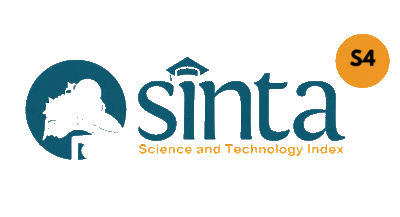Pendampingan Masyarakat dalam Perencanaan Penataan Permukiman Kumuh di Kampung Pedak Baru, Bantul
DOI:
https://doi.org/10.24002/jai.v3i6.8139Abstract
Architectural works of poor communities in informal settlements are often recoqnized as Marginalized Architecture, because indeed the people who create the Architecture is in these settlements are people who are marginalized by the social strata of urban society. They develop the house according to their needs and abilities. Methods of development, planning and design as well as the use of building materials are often very suitable for the needs of the local community, the local climate and even according to their daily income. In SDGs 2030 it is hoped that the settlements of these marginal communities can be eliminated. One of the marginal settlements in Bantul Regency is located in Kampung Pedak Baru, Bangun Tapan Village. The situation of marginal settlements developed on the banks of the Gajahwong river needs to be developed. Through community assistance conducted by lecturers from Duta Wacana Christian University, community-based slum settlement planning was carried out. With a totally participatory planning model, this community service program can be implemented well together with the team KOTAKU program supported by the Bantul Regency regional government. As a result of the total participatory model in planning slum development, the people of Kampung Pedak Baru are satisfied because they were involved in the planning process. Apart from that, currently the Bantul Regency Government is still negotiating with the Central Government to finance the implementation of the slum area development plan in Kampung Pedak Baru.
Architectural works of poor communities in informal settlements are often recoqnized as Marginalized Architecture, because indeed the people who create the Architecture is in these settlements are people who are marginalized by the social strata of urban society. They develop the house according to their needs and abilities. Methods of development, planning and design as well as the use of building materials are often very suitable for the needs of the local community, the local climate and even according to their daily income. In SDGs 2030 it is hoped that the settlements of these marginal communities can be eliminated. One of the marginal settlements in Bantul Regency is located in Kampung Pedak Baru, Bangun Tapan Village. The situation of marginal settlements developed on the banks of the Gajahwong river needs to be developed. Through community assistance conducted by lecturers from Duta Wacana Christian University, community-based slum settlement planning was carried out. With a totally participatory planning model, this community service program can be implemented well together with the team KOTAKU program supported by the Bantul Regency regional government. As a result of the total participatory model in planning slum development, the people of Kampung Pedak Baru are satisfied because they were involved in the planning process. Apart from that, currently the Bantul Regency Government is still negotiating with the Central Government to finance the implementation of the slum area development plan in Kampung Pedak Baru.
References
[1] Bappenas, “Rencana Aksi Nasional TPB Tahun 2021-2024,” pp. 2021–2024, 2021.
Direktur, “Laporan Evaluasi Fase I (2017 - 2019) NSUP/Program KOTAKU Wilayah PEndanaan WB/AIIB Oktober 2021,” Jakarata, 2021.
P. Bawole and H. B. Sutanto, “Community empowerment strategy by sustainable built environment planning in Urban Kampong,” IOP Conf. Ser. Earth Environ. Sci., vol. 126, no. 1, 2018.
E. Purwanto, A. Sugiri, and R. Novian, “Determined slum upgrading: A challenge to participatory planning in Nanga Bulik, Central Kalimantan, Indonesia,” Sustain., vol. 9, no. 7, 2017.
B. Beccari, “A Comparative Analysis of Disaster Risk, Vulnerability and Resilience Composite Indicators,” PLoS Curr., pp. 1–38, 2017.
J. W. Creswell, Research Design, 3rd. California 91320: SAGE Publications, Inc., 2009.
Samsu, Metode Penelitian (Teori dan Aplikasi Penelitian Kualitatif, kuantitatif, Mix Methods, serta Research & Development), 1st ed. Pusat Studi Agama dan Kemasyarakatan (PUSAKA), 2017.
E. Y. Danso-wiredu and E. Midheme, “Slum upgrading in developing countries: lessons from Ghana and Kenya,” Ghana J. Geogr., vol. 9, no. 1, pp. 88–108, 2017.
W. D. Ayyubi, Ramon; Wijaya, I Nyoman Suluh; Purnamaasari, “Livability Permukiman Kampung Kota Kelurahan Tulusrejo, Kota Malang,” vol. 9, no. 2, pp. 77–94, 2017.
Q. Akbar, hiya’ul & Mursadin, “The Effectiveness of Slum Settlement Arrangement in Mentaos Village, Banjarbaru City,” Tech. Soc. Sci. J., vol. 28, pp. 789–801, 2022.
W. Li, P. Li, Z. Feng, and C. Xiao, “GIS-Based Modeling of Human Settlement Suitability for the Belt and Road Regions,” Int. J. Environ. Res. Public Health, vol. 19, no. 10, 2022.
M. Indrasari and I. Rudiarto, “Kemampuan Kebertahanan Masyarakat pada Permukiman Rawan Banjir di Kecamatan Barabai, Kabupaten Hulu Sungai Tengah,” J. Wil. dan Lingkung., vol. 8, no. 2, pp. 116–129, 2020.
M. W. Akhlaq, Z. S. Chadhar, and J. R. Kataria, “Social And Political Conditions Of Slum Dwellers,” vol. 7, no. 5, pp. 294–304, 2023.
Heryati, “KAMPUNG KOTA SEBAGAI BAGIAN DARI PERMUKIMAN KOTA (Studi kasus Tipologi Permukiman RW 01 RT 02 Kelurahan Limba B dan RW 04 RT 04 Kel,” Inovasi, vol. 8, no. September 2011, pp. 102–117, 2011.
A. N. Ugwu and E. O. Aruma, “Community Participation As a Tool for the Promotion of Sustainable Community Development,” Int. J. Community Coop. Stud., vol. 7, no. 1, pp. 1–10, 2019.
O. B. Adegun, “Green Infrastructure Can Improve the Lives of Slum Dwellers in African Cities,” Front. Sustain. Cities, vol. 3, no. March, pp. 1–4, 2021.
P. Bawole, “Neighborhood Development Strategy to Empower Local Community for Tourism Development in Urban Kampong Settlement within Yogyakarta City,” 2019.
Mayszea Prawika Firdausya, Ed., Kecamatan Semanu Dalam Angka 2022. Baleharjo. Wonosari: Balai Pusat Statistik Guung Kidul.
Downloads
Published
Issue
Section
License
Copyright (c) 2023 Paulus Bawole, Ms

This work is licensed under a Creative Commons Attribution-ShareAlike 4.0 International License.










